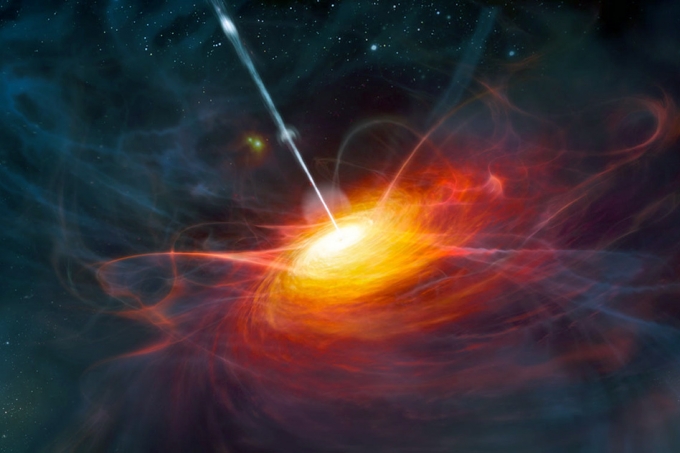Science Daily reported that quasars are located in distant galaxies inside huge supermassive black hole. They are in the night sky across the electromagnetic spectrum, the bright lights, the accumulation of substances to be able to quickly absorb the black hole center. The latest research Carnegie Mellon researchers Hubble Shen Yue (Yue Shen) and Chinese Peking Kavli Institute for Astronomy and Astrophysics (KIAA) Ho sub-Hill (Luis Ho) conducted by astronomers solve the problems of up to 20 quasar mystery years, the study was published in the journal September 11 “natural.”
Astronomers observed quasars generally exhibit a wide range of outward characteristics, reflecting the diversity of environmental conditions they are near the center of the region. Despite the diversity of their physical characteristics of the quasar in quantifiable terms, has a surprising regularity, follow a clear trend has been fully discovered 20 years ago (called quasars main sequence). Shen and how to solve the quasar study in a 20-year riddle: What unifies these characteristics to form the main sequence?
Use of the Sloan Digital Sky Survey (Sloan Digital Sky Survey, abbreviated as SDSS) in 20,000 quasars by far the largest and most uniform samples, combined with several innovative statistical tests, Shen and Ho show the black hole accretion related a feature that is Eddington ratio, is the driving force behind the so-called main sequence. Eddington ratio describes the substance as a black hole for supplying fuel efficiency, which is the material falling into the black hole of the drag competition and drive out the gravitational radiation luminosity between. This gravitational drag and luminosity between scientists suspect has been the main driving force behind the program, and eventually sink and what research confirms this hypothesis.
In addition, most importantly, they found that when astronomers observe the direction of the black hole interior region of sight in the depths of the observation angle hole fast-moving gas plays a key role in these gases will have broad emission lines in the spectra of quasars inside. This changes the geometry of the black hole, scientists understand the nearest emission line region, also known as broad lines: flat style gas distribution similar to pancakes. Further research will help astronomers to improve the measurement of the quasar black hole mass.
“Our study found that for quasars has far-reaching enlightenment. Simple unified model for a better understanding of how supermassive black holes are accumulated material and interact with the surrounding environment, paving the way.” Shen said. “Better black hole mass measurements also benefit a range of application areas, such as supermassive black holes in the universe for growth and galaxy formation in their understanding of the role.”

